
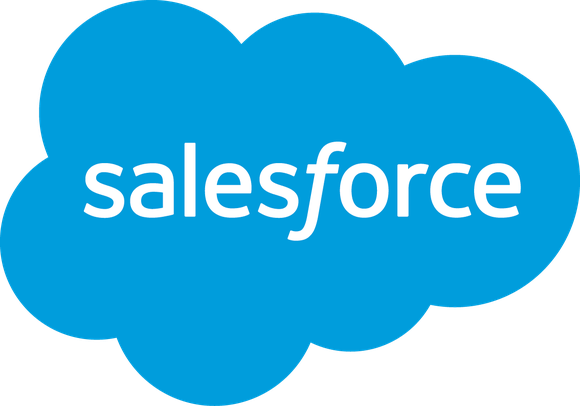

Growing the business in very short time is not that very easy for everyone. It requires boosting sales; but it is not just simply selling your product or service to existing and potential customers. A business will be successful only if it has a methodical and well-organized way of meeting leads so that they can be transformed to sales and eventually loyal customers. After so much research and study on the various CRM’s, Salesforce is recommended as one of the best CRM software for the businesses as it offers the whole lot needed to make it earlier and easier to close the sales for a business. Here are some credible reasons as to why it is the best CRM software in the marketplace.
Customer Relationship Management software solutions are offered often in ‘on-premises’ delivery models since 15 years from now; usually companies install this software on their servers and maintain it in-house. However, with the help of on-premise CRM software’s today the IT companies had a benefit to take the technical responsibilities that include the system design, infrastructure and server supervision.
However there is a lined way for a narrative kind of CRM and the Cloud based CRM. While these CRM applications can be hosted by the vendors and organizations in any cloud based CRM’s and help to increase access to data throughout the web without having to fret about any practical aspects of managing it.
Cloud has become so popular over time; and upsetting the thought of the on-premise CRM model as there was no software license fee involved, and the organizations don’t need devoted IT staff or infrastructure. The Cloud CRM has in turn reduced the cost of monthly services and eased the set up process.
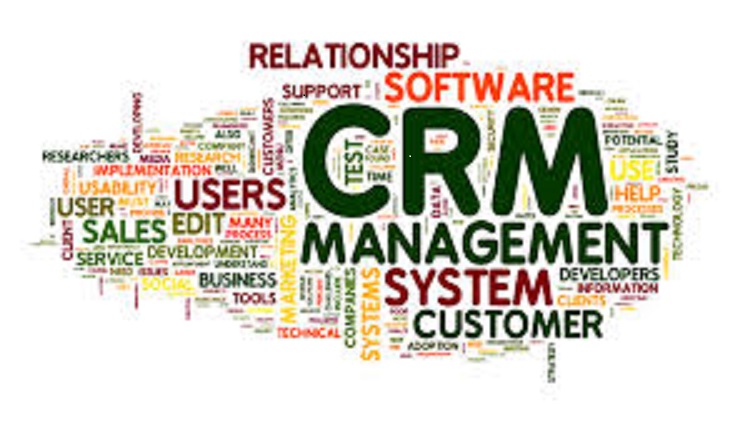
Organizations are in need of a cloud CRM as it helps them to deal with all sorts of customer concerns varying from marketing to sales and towards promoting to customer service. This process not only streamlines the enterprises but in turn help in saving valuable capital and time. Salesforce was founded in the year 1999 by former Oracle executive Marc Benioff, Dave Moellenhoff, Parker Harris, and Frank Dominguez - with a dream to reinvent the Cloud CRM model and now, Salesforce defines the new era of cloud computing.
Salesforce proficient version helps the marketing teams of a company create and track a variety of marketing campaigns to determine the success rate and automatically provide leads to the sales team of the company.
Salesforce also keeps a track of various customer issues and tracks them for resolution based on various increase rules such as the significance of the client and beyond time. This improves customer satisfaction levels as the issues do not fall through pitfalls and are directly escalated to the next level.
...
Read More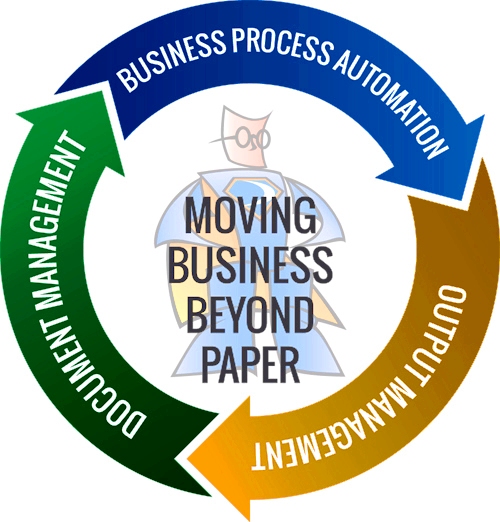

Today, customers are looking for the best than the better in everything and want it quick along with seamless digital experience, so will it happen, but how?
Let us look how digital experience and digitalization will help us improve our business.
We should thank companies like; Apple and Amazon who anticipates that every organization should deliver products and services rapidly, with a seamless user experience.
Consumers are looking for the ablity to login to their electricity account and check their electricity consumption online. They go to the telecommunications dealer and to buys a smartphone and expecting it to activate instantly. They even looking at the banks to approve their personal or mortgage loan instantly. They expect instant approval of services whether it private/public sector.
They even wonder why they need to provide identification proofs and financial statements to the banks when their employer is crediting their pay checks every month on-time.
Customers are demanding for instinctive interfaces, , personalized treatment, persistency and consistency, real-time accomplishment, negligible errors and 27/7 availability. This behavior of the consumers are changing rapidly they are looking for more comforts and customizations.
It’s more than a greater customer experience, nonetheless; when establishments get it right, they can as well tender aggressive pricing because of lesser overheads, enhanced and well equipped operational controls, with less risk.

Enchant the Customer
To catch hold of their consumer expectations organizations must gear up the process of digitization of their business. But it should be more that the automating a current process. Organizations must rethink to reinvent the operations process, including a quick decision making strategy, permit the less number of required steps, speeding up the documentation process parallel efforts should be taken with fraudulent and regulatory issues.
Operating models, skills, organizational structures, and roles need to be redesigned to match the reinvented processes.
Operating models should be accustomed and redesign to facilitate customer insights better performance tracking capabilities, and decision making abilities. The process of Digitization often requires new skills combined with that old wisdom.
Nevertheless to say that There are huge benefits by the digitizing processes, companies can save cost upto 90% and TAT (turnaround time) enhanced by several orders of magnitude.
For example one financial institution digitized its mortgage application, assessment process decision making process, which gave the organization of ability to cut the cost per 70 percent and reducing the time to preliminary documents approval from numerous days to just in minutes process.
A telecom service provider can up with a system where customers get the feasibility to activate their new phones without the involvement of the backend department. Through digitization process insurance companies automatically arbitrate a large share of its simple claims. Upgrading from paper and manual process with software allows organizations to collect the required data automatically which also improves the process performance, while reducing the cost and risks. Digitization also helps manager to address the issues before they become critical. Supply chain quality issues can be acknowledged and resolved by monitoring purchaser business activities and feedback.
Many top organizations are reinventing their processes, testing the whole lot of things connected to an existing process and renovating it using cutting edge digital technology.
This approach is done through series of process combining advanced and traditional process, like lean and agile.
Hit Factors
Companies in every sector can gain knowledge from the practices conducted by other organizations that have implemented this successfully.
The process of Successful digitization implementation starts by developing a scheme for the future state for each process keeping aside the current constraints and reducing the turnaround time from days to minutes. Once the future scheme has been developed constraints will be revisited. Organizations should always focused to confront each constraint.
Recurrently checking the consumers experiences not only boost effectiveness in definite areas but also helps to address some burning issues. But this is not a complete recipe to deliver great user experience. To enrich the user experience the digitization team should receive spport from every corner involved in user experience.
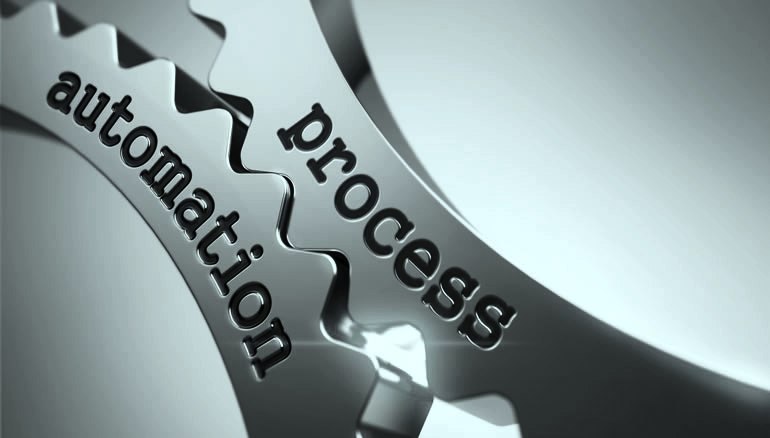
Tackle the End-To-End Customer Experience
But it will never deliver a truly seamless experience, and as a result may leave significant potential on the table. To tackle an end-to-end process such as customer on boarding, process-digitization teams need support from every function involved in the customer experience.
To achieve this, some companies are creating cross functional and start up style units, which is way to involve all the stakeholders and users concerned with the end-to-end user experience. Members are often collaborated to achieve better lines of communication and guarantee a true team effort.
Build Capabilities
Resources on Digitization are in short supply, so successful portfolios put emphasis on construction in house capabilities.
The aim is to provide excellent service with highly skilled staff with the intention that can be called upon to digitization quickly. Organizations should hunt for faculty externally to meet the requirement for new roles, and skill sets, like user-experience designers and data scientists . To achieve this, managers selected in the first wave to pilot the transformation must be carefully picked, and he/she should be ready to commit with the organization for a long time well trusted in the organization,. It is also essential that the staff has the ability to build the necessary technology components in a high proficient way so that they can be able to be reused across processes, maximizing economies of scale.
Enter Blog Details here...
...
Read More

Two development firms in Big data and Analytics space; DATA -Tableau and Hortonworks saw a critical time when their data released missed the forecast by 0.05$, and dropped their stock by five percent. This is what going frequently with companies and no one has any clue on what is going on with BI business Intelligent and Hadoop space. Should companies run from BI and Big data space before it completely collapses?
Instead of focusing on the sensational headlines; the investors and technology corporate leaders should also focus on the missed forecasts as they leave some clue on some important analysis and trends which will help them to grow.
While the companies need to look at their results in the context of the industry as a whole; which will show the exact results as per the worldwide analysis. As per the Gartner’s analysis for worldwide dollar-valued IT; it says that IT spending has grown in 2016 at a flat percent of 0.0. However, 35% of growth is fairly incomparable by this benchmark, and if we look at Hortonworks’ results for this gone quarter: then the total revenue grew by 46% year over a year.
This means, the Investors’ expectations are growing high and even they are tough to manage. To manage this kind of issues the industry observers and technology buyers should standardize the performance of both organizations against the rest of the industry before they make a knowledgeable conclusion.
As per recent survey —Teradata also reported revenue and its business shrink by 4% Year over a year. Leaving other things remaining equal, the analysis says that Hortonworks could generate more revenue than Teradata by 2020.
Let’s look on some of the data analysis pitfalls you should avoid before you are sucked in.
Confirmation Preference
If you have a proposed explanation in your mind; but you are only looking for the data patterns that support it and ignore all data points that reject It. Then let us see what will happen.
First, analyze the results of that particular patterns performed well and find the conversion rate on the landing page. This will help you to really perform high than the average you think. By doing or following such analysis you can use that as the sole data point to prove your explanation. While, completely ignoring the fact of those leads will qualify or the traffic to the landing page will be sub-par.
There is again a thumb rule which is very important to remember, you should never approach data exploration with a precise conclusion in mind; as most of the professional data analysis methods are built in a way that you can try them before you actually go and reject your proposed explanation without proving it or to reject it to the void.
Correlation Vs Cause
Combining the cause of a fact with correlation somewhat will not show any action. While, when one action causes another, then they are most certainly correlated. However, just because two things occur together doesn’t mean that one caused the other, even when it seems to make some sense.
You might find a high positive association between high website traffic and high revenue; however, it doesn’t mean that high website traffic will be the only cause for high revenue. There might be an indirect or a common cause to both that may help to generate high revenue more likely to occur when high website traffic occurs.
For example, if you find a high association between the number of leads and number of opportunities from a classic B2B data quest, then you might gather a high volume of leads with a high number of opportunities.
Here are some more things that you need to watch when doing data analysis:
• Do not compare unrelated data sets or data points and conclude relationships or similarities.
• Analyze incomplete or “poor” data sets and make proper decisions based on the final analysis of that data.
• Do not analyze the data sets without considering other data points that might be critical for the analysis.
• The act of grouping data points collectively and treating them as one. Which means, looking at various visits to your website and creating unique visits and total visits as one and inflating the actual number of visitors and converting it to the best conversion rate.
• Do not ignore any simple mistakes and oversights which may happen anytime.
...
Read More

Artificial intelligence has been spread over a very large area of computing since the beginning of the computer, but we are getting closer than ever with cognitive computing models. What are these models and why are we talking about it today.
Cognitive computing comes from a mash-up of cognitive science which is the study of the human brain and how it functions and a touch of computer science and the results will have far-reaching impacts on our private lives, healthcare, business, and more.
What is Cognitive Computing?
The aim of cognitive computing is to replicate human thought processes in a programmed model. It describes technology platforms that broadly speaking, and which are involved in self-learning systems that use data mining, natural language processing, and pattern recognition to mimic the way the human brain works. With the goal to automate the IT systems that are capable of solving the problems without requiring human assistance the Cognitive computing is growing very fast.
Cognitive computing systems use machine learning algorithms; which repeatedly acquire knowledge from the data fed into them by mining data for information. These systems treat the way they look for patterns and as well as the way they process data so they have become competent of anticipating new problems and modeling possible solutions.
Cognitive computing is used in numerous artificial intelligence applications (AI), including expert systems, neural networks, natural language programming, robotics and virtual reality. While computers are proved the faster machines at calculations and meting out the humans for decades; these machines haven’t been able to accomplish some tasks that humans take for granted as simple, like understanding natural language, or recognizing unique objects in an image. The cognitive computing represents the third era of computing: it from computers that could tabulate sums (the 1900s) to programmable systems (1950s), and now to cognitive systems.
The cognitive systems; most remarkably IBM and IBM +0.55%’s Watson, depend on deep learning algorithms and neural networks to process the information by comparing it to an education set of data. The more data the systems are exposed to, the more it learns, and the more accurate it becomes over time, and this type of neural network is a complex “tree” of decisions the computer can make to arrive at an answer.
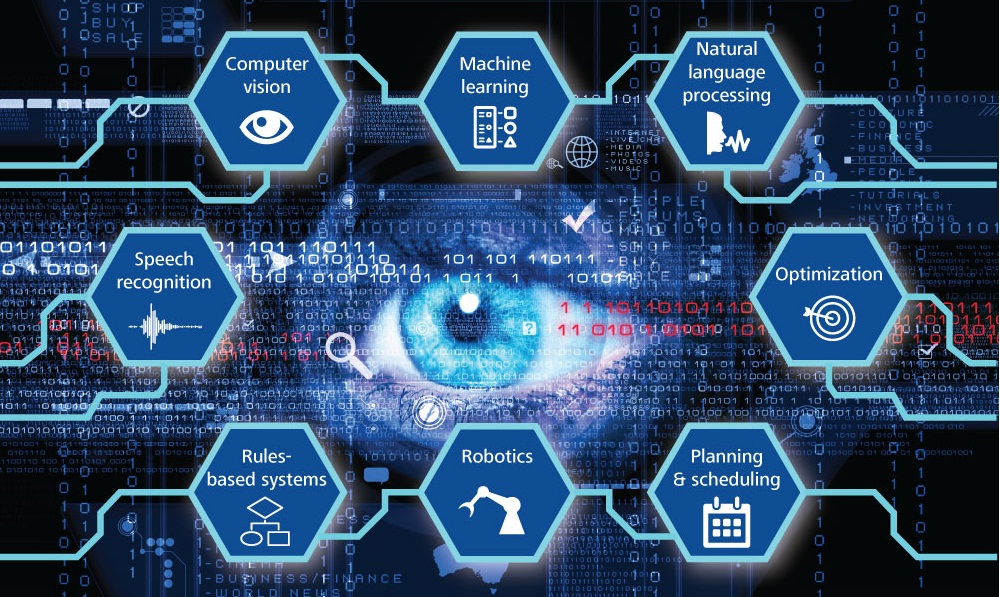
What can cognitive computing do?
As per the recent TED Talk from IBM, Watson could ultimately be applied in a healthcare setting also, this helps the administrative department of healthcare to collate the span of knowledge around conditions, which include the patient history, journal articles, best practices, diagnostic tools, and many more. Through this, you can easily analyze that vast quantity of information, and provide your recommendations as needed.
The next stage is to examine, which will be proceeded by the consulting doctor, who will then be able to look at the evidence and based on the recorded evidence the treatment options will be released based on these large number of factors including the individual patient’s presentation and history. Hopefully, this will lead to making better treatment decisions.
While in other scenarios, when the goal is not to clear and you look to replace the doctor, and the doctor’s capabilities by processing the humongous amount of data available will not be retained by any human and thus providing a summary of potential application will be overdue. This type of process could be done for any field such as including finance, law, and education in which large quantities of complex data will be in need to be processed and analyzed to solve problems.
However, you can also apply these systems in other areas of business like consumer behavior analysis, personal shopping bots, travel agents, tutors, customer support bots, security, and diagnostics. We see that there are personal digital assistants available nowadays in our personal phones and computers like —Siri and Google GOOGL -0.21% among others, which are not true cognitive systems; and have a pre-programmed set of responses and can only respond to a preset number of requests. But, as tech is on high volume we will be able to address our phones, our computers, our cars, our smart houses and get a real time in the near future when thoughtful response rather than a pre-programmed one.
The coming future will be more delightful for us as computers will become more like humans and they will also expand our capabilities and knowledge. Just be ready to welcome the coming era when computers can enhance human knowledge and ingenuity in entirely new ways.
...
Read More

The Internet of Things (IoT) has quickly turned out to be one of the most adapted and maybe, most advertised jargons across IT & ITES industry. However, it is completely defensible and is backed up by the numbers. Beyond of its extensive range of benefits, the state of the art of this trend being involved in the IT sector is inevitable.
The IoT of things are not all-purpose devices, such as smartphones and computers, but dedicated objects, such as vending machines, jet engines, connected soap dispensers and many other countless examples.
IoT will have a great impact on the economy and many enterprises will look into transforming their businesses into digital and facilitate their business models by improving efficiency to generate good ROI. It’s a tradition that enterprises always look up for successful trends and for sure Industries are looking at IoT, but the implementation is still premature. Even though there is some immaturity, but there is still some evidence of planned uses across a wide range of industries. We may find an answer from these existing evidence to the question of the hour, what needs to be done to build IoT at the enterprise level.
Sensors
Objects that contain sensors found useful in all studies, for example, you can fix a sensor to the products in a grocery store and if the item is spoiled it will give you a buzz to replace the item, the cost of purchase and installation of a sensor is relatively cheap and it also reduce the stress on the workforce.
Connectivity
You can always stay connected to your IoT device via your smartphone or through a hub or the device itself contains the Internet connectivity.
Processors
Without a processor there is no computing or a smart device. IoT devices will have capabilities of computing and storing relevant data passed on to it. There is a need to equip these devices with some useful features, so there is a need of advanced processors equipped with these devices.
Energy-efficiency
Think about the high-end business models, where there will a lot of flow of customer and immense pressure on your workforce, you need a device which has the conservative amount of energy, which will not ask you for a battery charger or replacement battery during peak hours.
Cost Effectiveness
The Business goal of IT companies is providing the users with the technology and features that they needed the most. However, there will be a significant cost for maintaining and supporting the user’s technology. IoT is the answer to reducing the signification cost and ensure flawless deliverability in the IT process or project.
Quality Standards
You need to operate your devices under harsh outdoor atmospheric conditions for a long time. There should be proper parameters and quality checks on the (IoT) devices produced by the industries.
Security
Securing your device or network is a critical mission, Devices that are associated with a network through IP’s have immense threats of being hacked/spoofed. Managing ID’s and access, saving the databases are critical to the triumph of the IoT. However, traditional approach and old school techniques cannot cope with the complexity that the IoT needs from the enterprise. It is the time for Business leaders and technology giants to reconsider their approach towards cyber security, and they should raise the curtains for the new set of security rules.
...
Read More